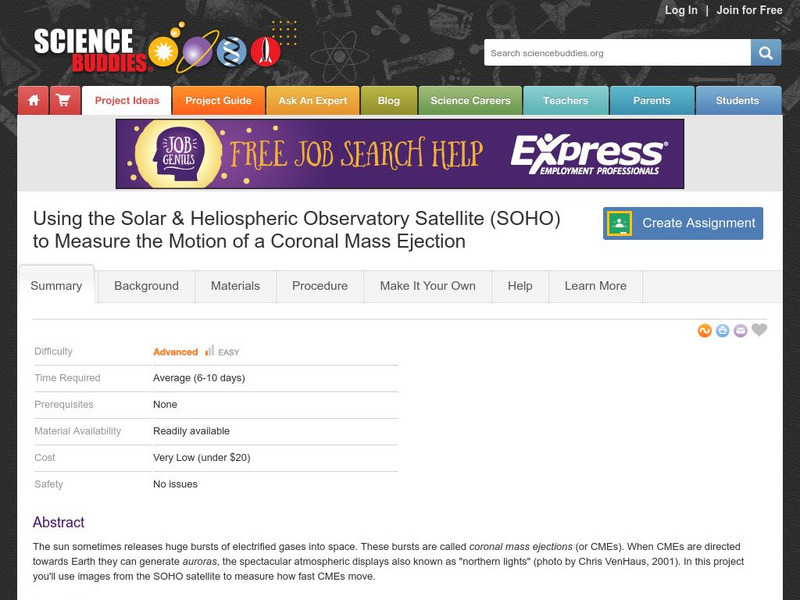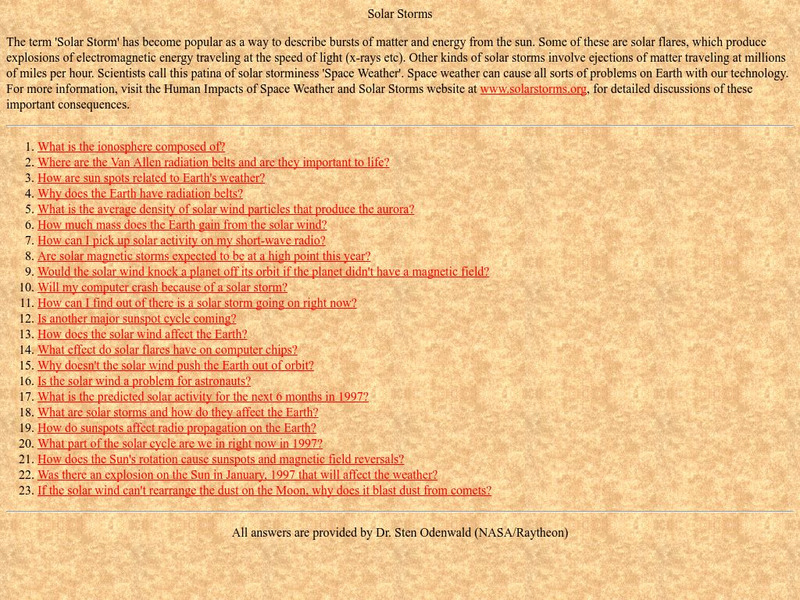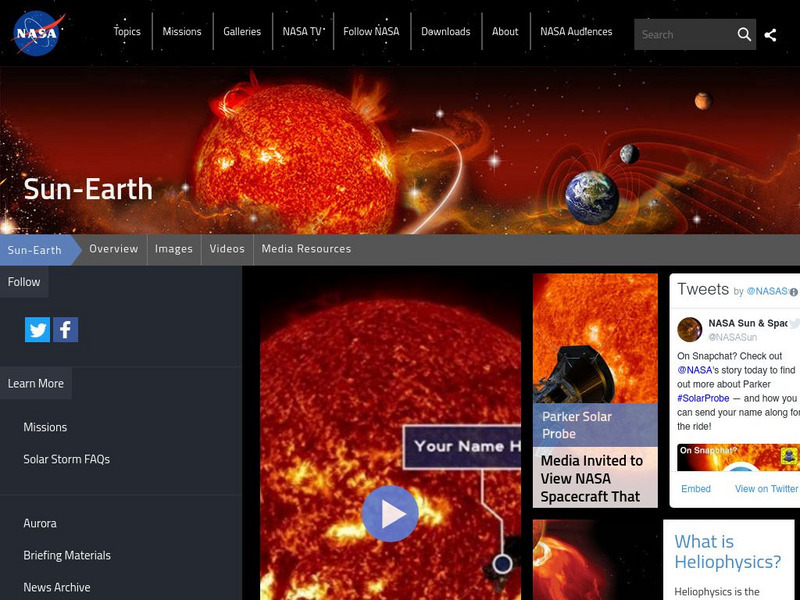NOAA
Noaa: Space Environment Center: Aurora [Pdf]
The science and some myths behind the aurora, also known as the aurora borealis in the Northern Hemisphere and the aurora australis in the Southern Hemisphere are explained.
University of Wisconsin
The Aurora Page Photographs by Jan Curtis
Nine pages of images, four to six to a page, showcase the magnificence of the Northern Lights.
Other
Usps: Polar Lights
You and your students are going on an expedition to learn about the polar regions. Explore the glaciers, subglacial rivers, and volcanoes. Get up close and personal with furry, flippered, and feathered friends. Learn how other people...
Exploratorium
Exploratorium: Auroras Paintings in the Sky
This site offers a very nice, detailed explanation of auroras along with some inspiring images and videos.
Science Buddies
Science Buddies: Observatory Satellite Measures Motion of Coronal Mass Ejection
The sun sometimes releases huge bursts of electrified gases into space. These bursts are called coronal mass ejections (or CMEs). When CMEs are directed towards Earth they can generate auroras, the spectacular atmospheric displays also...
TED Talks
Ted: Ted Ed: What Is an Aurora?
Why do we see those stunning lights in the northern- and southernmost portions of the night sky? Michael Molina explains every step of the dazzling phenomenon of the Aurora Borealis and Aurora Australis. [4:10]
PBS
Nova: Gallery of Auroras
Find out what causes the aurora borealis. You can view some interesting photographs of the aurora in action.
Curated OER
Science Kids: Science Images: Aurora Borealis, Northern Lights
The aurora borealis (also known as the northern lights) is a spectacular light display that can be seen at night in regions near the North Pole (auroras can also be seen near the South Pole). Auroras occur because of charged particles...
National High Magnetic Field Laboratory
Magnet Academy: Anders Celsius
Anders Celsius is most familiar as the inventor of the temperature scale that bears his name. The Swedish astronomer, however, also is notable as the first person to make a connection between the radiant atmospheric phenomenon known as...
Exploratorium
Exploratorium: Auroras: Paintings in the Sky
Six different questions are addressed by this resource. The questions address everything you might need to know from what they look like to what causes them.
Other
Twan: Messengers From the Sun
An incredible photograph of the aurora borealis with some fascinating information as to its origins are presented in this site.
NASA
Nasa: Image Science Center: Ask the Space Scientist Earth
Site from NASA contains a collection of 91 questions pertaining to the Earth's atmosphere, magnetic field, ionosphere, rotation and origin of life.
Science Struck
Science Struck: Facts About the Thermosphere
Learn facts about the thermosphere, one of the five layers of the atmosphere.
Other
Polar Continental Shelf Project for Kids!
Visit this resource to learn about the geography, wild life, plants and people of Polar Continental Shelf in Canada's Arctic. Students can take a quiz to see how much they have learned.
Curated OER
Aurora With Orion in the Winter Sky
Six different questions are addressed by this resource. The questions address everything you might need to know from what they look like to what causes them.
NASA
Nasa: Heliophysics: New Science of the Sun Solar System Connection
This site from NASA lists common and uncommon misconceptions about Sun-Earth Science. Site also provides links to activities and lesson plans as well as background reading.
![Noaa: Space Environment Center: Aurora [Pdf] Handout Noaa: Space Environment Center: Aurora [Pdf] Handout](https://d15y2dacu3jp90.cloudfront.net/images/attachment_defaults/resource/large/FPO-knovation.png)










